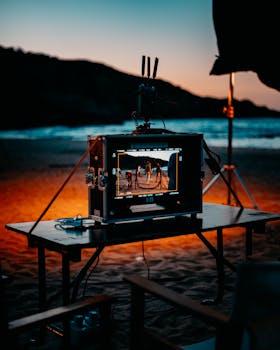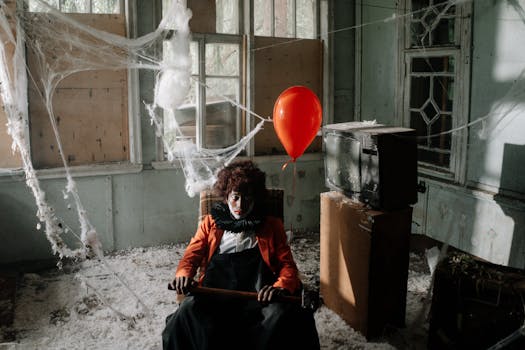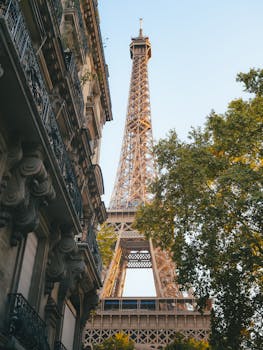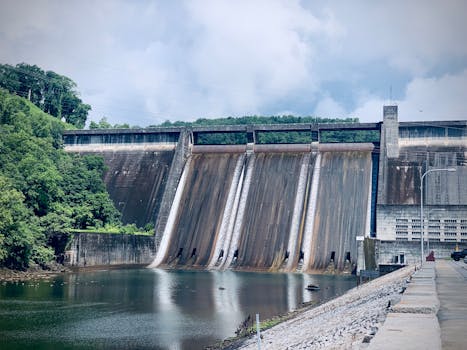Movies
Famous Film Scores That Instantly Set the Mood
Legendary film scores transform cinema, setting mood in seconds. Discover what makes these iconic soundtracks unforgettable, and learn how composers build tension, nostalgia, and wonder on-screen.
Advertisement
The right piece of music transforms an ordinary scene into pure cinematic magic. As you watch your favorite films, notice how well-placed film scores make thrills deeper, laughter lighter, and heartbreak sharper.
Film scores matter because they draw viewers into the emotional core of every moment, whether it’s a chase across rooftops or a quiet farewell. For anyone who appreciates movies, understanding scores is a way to unlock deeper meaning in every frame.
Throughout this article, you’ll discover standout examples of film scores that ignite suspense, joy, wonder, or nostalgia with a few notes. Let’s dive deeper and learn how each legendary score achieves its instant impact.
Recognizing the Power of Film Scores in Iconic Scenes
When music sets the mood, even a silent glance on screen becomes charged with tension or tenderness. Achieving this effect starts with understanding how film scores work in tandem with cinematography and editing.
One instantly memorable example is the opening of “Jaws,” where a two-note score means you always feel the predator’s presence, even before it appears. That’s the magic at play.
Establishing Emotional Tone Layer by Layer
To create emotion, composers weave recurring motifs into key moments. John Williams’s “Star Wars” theme delivers awe and excitement—viewers instantly sense the vastness of the universe.
These motifs become audience anchors, resurging whenever a character or moment needs emphasis. Try humming the “Harry Potter” theme and notice how anticipation bubbles up, no matter where you are.
Choose a recurring melody when scoring to ensure the viewer recognizes emotional cues each time it plays, deepening their connection to the story.
Blending Sound and Silence for Maximum Impact
Contrast guides impact. When the music drops to near silence, like in “The Godfather,” tension rises. Audiences wait, breath held, for what comes next, creating unforgettable suspense.
This tension-and-release pattern gets used again and again. Imagine a dramatic pause before a revelation—film scores use silence strategically to heighten stakes.
To test this in your own work, try leaving the room quiet after dialogue, then cueing music as emotion swells. You’ll feel how it shifts energy instantly.
| Movie | Composer | Signature Moment | Takeaway |
|---|---|---|---|
| Jaws | John Williams | Shark fin surfaces | Repetition creates anticipation |
| Star Wars | John Williams | Main Title crawl | Epic scale established in seconds |
| Harry Potter | John Williams | Hogwarts reveal | Childlike wonder captured instantly |
| The Godfather | Nino Rota | Opening wedding | Melancholy woven into family drama |
| Inception | Hans Zimmer | Dream collapses | Bass notes mirror suspense peaks |
Creating Atmosphere: Techniques Composers Use for Instant Mood
By understanding compositional strategies, you can better spot why a particular film score feels electric or melancholy before you even recognize the theme. The right technique shapes first impressions.
Tempo, instrument choice, and rhythm combine to evoke specific emotions. With a racing beat, the room tenses; as strings swell, relief follows. Film composers craft mood as deliberately as directors compose images.
Using Instrumentation for Emotional Cues
For a hero’s entrance, composers might choose French horns and soaring strings—think Superman’s triumph. In contrast, isolated piano notes in “The Piano” paint scenes with vulnerability and loss.
Each instrument brings unique textures. Electric guitars amp up rebellious energy; woodwinds suggest mischief or whimsy. Switch up your instrument palette based on the feeling you want to evoke.
- Pick strings for warmth—like in romantic scenes—because their resonance matches the human voice, making viewers subconsciously lean in to listen and relate instantly.
- Use brass for fanfare or alarm, like military heroics or city danger. The sharpness commands attention and signals urgency, which keeps people awake and alert in the audience.
- Feature woodwinds for magical or mysterious moments. Whispery flutes and clarinets are perfect when the plot enters an uncertain or dreamy realm, helping set stories apart from reality.
- Add piano in scenes of solitude or reflection. Sparse keystrokes capture internal struggle, pulling focus to a character’s silent thoughts and drawing empathy from viewers.
- Integrate percussion during action to drive movement. The beat mimics heart rate increases, so using drums or rhythm sections instantly amplifies pace and excitement.
Instrumentation works when thoughtfully matched to story moments. Switching instruments reshapes a scene’s feel in seconds.
Balancing Melody and Rhythm for Narrative Flow
Well-crafted melodies guide audiences through shifting scenes. Hans Zimmer’s “Interstellar” uses slow, looping motifs to mimic the unending nature of time and space.
Fast-paced rhythms, as heard in “Mad Max: Fury Road,” keep tension on edge during chase sequences. By adjusting rhythm, composers manipulate the film’s heartbeat, matching audience pulse in real time.
- Repeat melodic phrases to anchor themes, especially during key character moments. This builds a thread of emotional logic that guides viewers, even as plotlines twist.
- Shift tempo to reflect urgency. Increase speed as stakes rise, and slow down as characters reflect. This timing makes each scene feel natural and immersive, tracking audience anticipation or relief.
- Sync rhythmic cues to physical action. Let percussion mirror footsteps, heartbeat, or clock ticks. This puts the audience inside the same emotional space as the characters, building a visceral connection.
- Introduce subtle rhythm changes before plot turns. For example, let a pattern break or pause to signal something’s about to change, inviting active listening and engagement from viewers.
- Use recurring melodic cells as sonic signposts. Whenever a motif reappears, it announces the theme—love, danger, hope—which focuses the audience even if distractions arise.
Employing melodic and rhythmic shifts helps you narrate a film’s journey—even without dialogue. It’s a powerful way to guide emotion scene by scene.
Scoring Suspense: Proven Techniques From Thriller Classics
Film scores heighten suspense by signaling danger, even when nothing appears on screen. By layering tense intervals or ominous drones, composers make heartbeats race before the villain enters.
Consider Alfred Hitchcock’s “Psycho”—sharp, stabbing strings set nerves on edge and transform a quiet bathroom into a horror icon. These musical cues become inseparable from the visual sensation of fear.
Orchestral Stings for Immediate Shock
Directors instruct composers to “hit the scare right on cue.” In practice, this means spiking the score with piercing strings or brass, enforced by sudden drops to silence. This shock-and-stillness combo magnifies jump scares.
Use a loud musical jolt to synchronize with sudden on-screen action. The abrupt contrast makes viewers react physically, often flinching or gripping armrests—a surefire test of effective suspense music.
After the burst, silence amplifies residual fear. Pausing all music after a scare lets tension echo, much like how silence lingers in a haunted house after a loud creak or slam.
Low-Frequency Drones to Build Ongoing Dread
Sustained bass or synth drones create the sensation of threat. In “Blade Runner 2049,” Hans Zimmer and Benjamin Wallfisch employ deep, vibrating tones that seem to press against the chest.
For best effect, tune drones to unresolved chords. This lack of resolution keeps anxiety unresolved, leaving viewers unsettled. Long, rumbling notes can be more unsettling than rapid rhythms in tension-building scenes.
Consider adding subtle dissonance—notes that clash rather than harmonize. This heightens discomfort and makes the environment feel more unpredictable, keeping the audience watchful throughout suspenseful sequences.
Evoking Wonder and Nostalgia Through Timeless Themes
Audiences instantly connect distant worlds, lost eras, or magical lands with the right film scores. These timeless themes use melody to evoke childlike awe or bittersweet longing. They tap into memory, real and imagined.
Steven Spielberg’s “E.T.” theme elevates a bicycle flight into pure magic. Just a few notes and viewers remember first loves, open skies, and impossible dreams. That’s the emotional power of scoring for nostalgia and wonder.
Layered Harmonies to Open Imagination
John Williams’s composition in “Jurassic Park” pairs spacious harmonies with wide melodic leaps. The sense of grandeur arrives instantly, making the audience feel the dinosaurs’ scale and the island’s mystery.
This technique—fusing major chords and gentle counterpoint—invites listeners into a world of hope instead of fear. Pairing uplifting melodies with panoramic shots guarantees viewers see beauty, not threat.
Apply this when depicting revelation or discovery in your own visuals. Set music one step brighter than expected to trigger excitement and curiosity, echoing the thrill of new beginnings.
Piano-Based Motifs for Poignancy
Alan Menken’s “Beauty and the Beast” melody, built around piano and soft strings, conjures nostalgia. The simplicity of the music returns audiences to familiar childhood moments, blending sadness and joy.
Keep piano arrangements clean and gently paced. Let each phrase breathe—the reflective pauses allow true memory or emotion to surface, almost like pausing to recall a favorite place.
If nostalgia is your goal, use uncomplicated harmonies and let familiar progressions return. This technique helps stories connect with all ages, making every viewer feel seen and remembered.
When Modern Film Scores Redefine Genre Expectations
Composers in recent decades have reimagined the rules by fusing classical scoring with electronic textures or unusual instruments. These approaches surprise the audience, refreshing classic genres with new sonic palettes.
Think of “Mad Max: Fury Road,” where drum-heavy rhythms and abrasive guitars fuel a relentless sense of chaos. By ignoring traditional orchestration, modern film scores can put a whole new spin on familiar genres.
Hybrid Soundtracks for Fresh Energy
Trent Reznor and Atticus Ross’s “The Social Network” proved electronics could drive emotion as powerfully as strings. Pulsing synths mirror digital themes perfectly, evoking fragmentation and ambition in the world of social media drama.
Mixing analog and digital sounds helps match the tone of modern stories. Try blending instrument samples with live recordings for a richer, less predictable mood in your own edits.
This hybrid style aligns the viewer’s experience with the narrative’s pace. Every genre can benefit from experimenting with unexpected timbres that fit the story’s real world or imagined future.
Extending Genre Boundaries With World Music Influences
“Black Panther”’s Ludwig Göransson mixed African percussion with orchestral arrangements, expanding expectations for hero movies. The score’s broad influences celebrate cultural identity and push genre boundaries.
Introducing world music elements diversifies listeners’ expectations—and helps universalize a story. Replace a familiar violin solo with a kora or duduk to transform the emotional backdrop instantly.
Experiment with unconventional instruments to match each project’s origin, setting, or message, allowing unique stories and sounds to flourish for modern audiences.
Using Leitmotif to Anchor Character and Story
Leitmotif—recurring musical themes for characters or ideas—anchors memories, especially in complex films. A signature phrase reminds viewers who’s on screen or hints at unseen influences shaping the story, uniting multiple storylines.
The best film scores leverage leitmotifs for everything from Darth Vader’s approach to Indiana Jones’s triumph. Audiences connect with these familiar cues, even across sequels or decades.
Assigning Distinct Musical Signatures
John Williams produces a signature cue for nearly every main “Star Wars” character. For example, Princess Leia’s theme, tender and lilting, instantly signals her arrival and her emotional world.
Consider using three-to-five note motifs for clarity. Repetition helps make the character’s music instantly recognizable across scenes. Assign subtle variations as arcs develop to suggest growth or change.
This strategy turns major characters into living themes—copy this technique for projects spanning multiple films or shifting genres by restating and evolving leitmotifs along with the story.
Foreshadowing With Musical Hints
Introduce a motif quietly before a character fully appears. For instance, the villain’s music might play in the background, hinting at their approach long before their reveal.
This subtle foreshadowing builds anticipation and clever rewatch value. Listeners may catch the motif’s clues only after a second viewing, adding richness to your storytelling layers.
To apply: bring in the motif’s rhythm, harmony, or texture early, growing its presence as the arc unfolds. The audience feels a connection—sometimes unconsciously—before plot events confirm it.
Bringing It Together: The Lasting Influence of Film Scores
Legendary film scores stand as much as part of cinema history as the stars or scripts. They heighten tension, evoke nostalgia, and help stories leap off the screen, captivating audiences worldwide.
Savvy directors and composers know which musical techniques animate mood—recurring motifs, expressive instrumentation, and bold arrangement choices. Recognizing these elements lets viewers appreciate the invisible magic at work in every great movie.
The next time a familiar theme swells, let yourself get swept away. Film scores aren’t invisible—they’re part of what makes movies unforgettable, scene after scene and year after year.
Trending Topics

Directors Who Changed Cinema Forever: The Film Directors Who Shaped Modern Storytelling
Meet visionary film directors whose daring ideas, artistic vision, and storytelling mastery permanently changed the world of cinema.
Keep Reading


